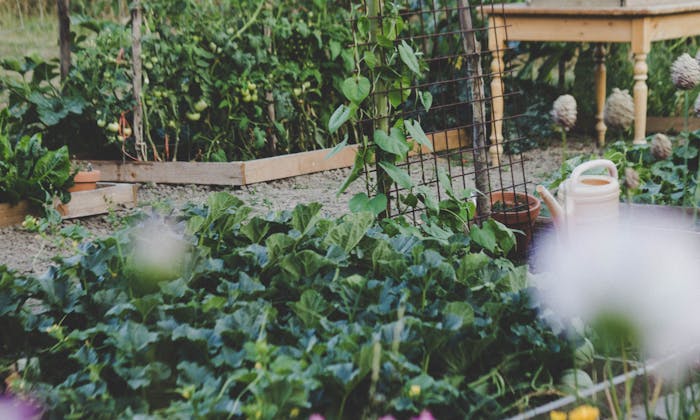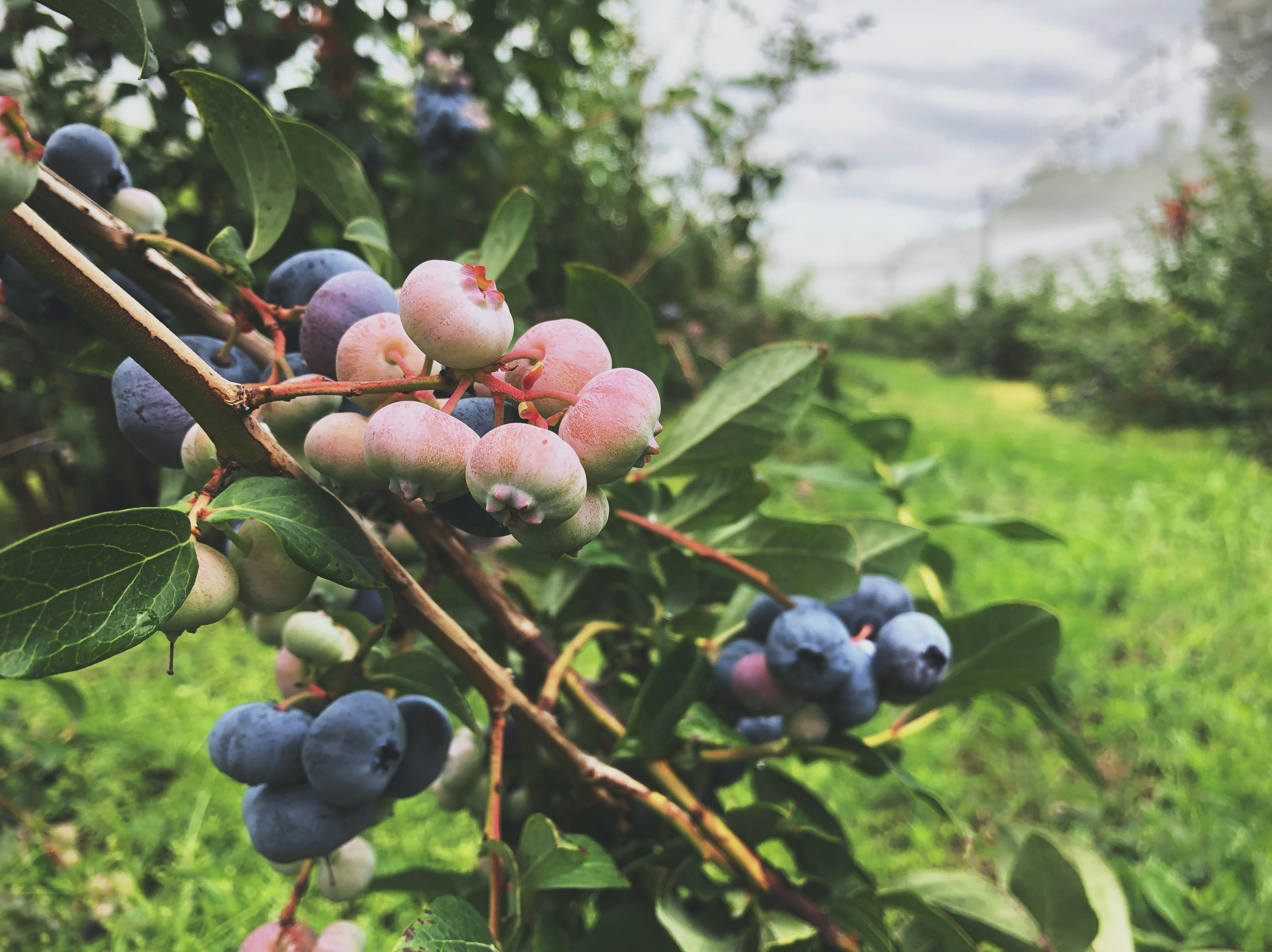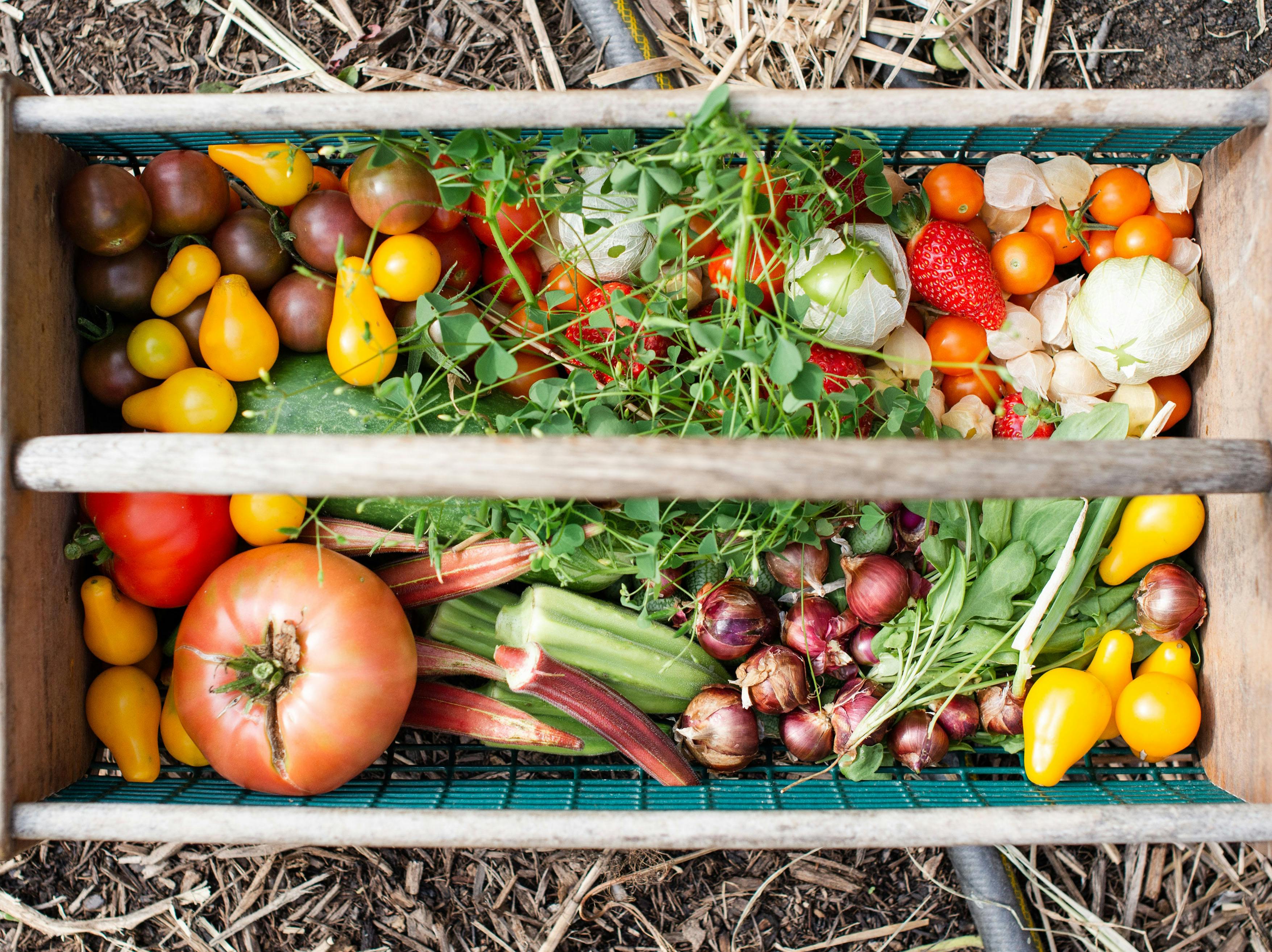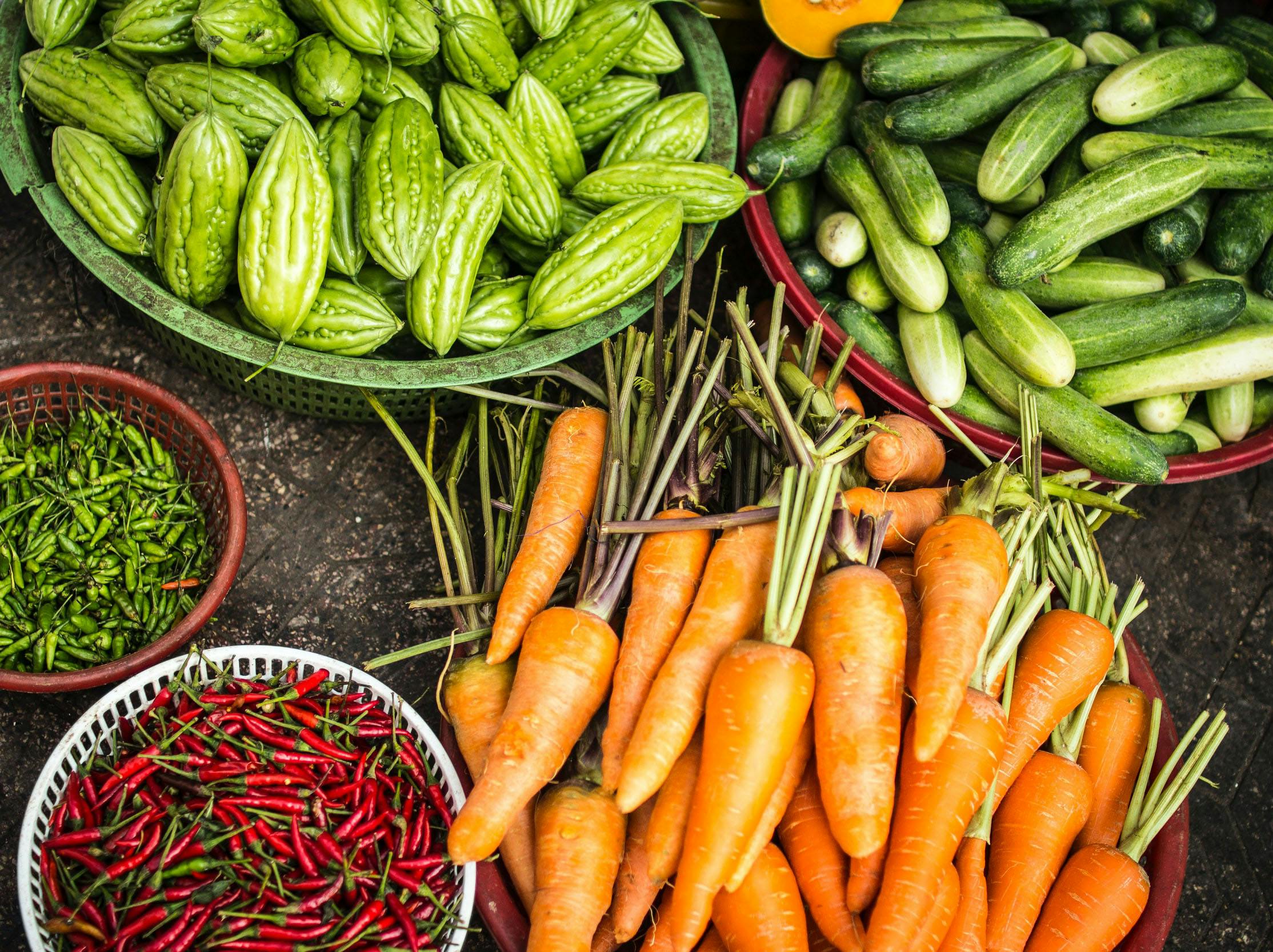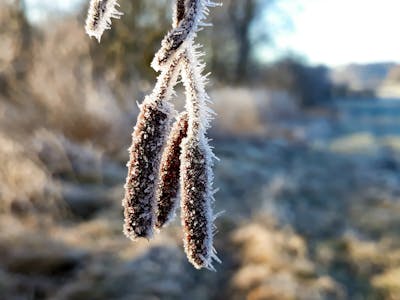Whether you are looking for inspiration to do something different this year or trying to narrow down your plant-growing appetite, here are 8 tips for choosing what plants you should grow this year and when
Finding plants to grow is as simple as looking through a seed catalog or browsing your local nursery. It's all too easy to buy more plants than you have space for. That can easily be avoided with planning. One important step in the planning process is deciding which plants you definitely want to grow!
- Find the Right Balance of Annuals and Perennials
The ideal garden might begin with many annuals but transitions over time to being mainly perennial plants.
The reasons for this are many, here are some of them:
- Work: You want your garden to do the work itself. Annuals require far more maintenance in the long-term than perennials
- Inputs: Established perennial plants require far fewer inputs than annuals. With annuals you constantly have to improve and renew the soil with either compost or fertilizer, whereas perennials do most of that themselves. Perennials also tend to be more efficient with their use of water.
- Outputs: Established perennials tend to flood you when it’s time to harvest
Carbon Sequestration: As a gardener, you don’t have to care about this, but I hope you do. Plants remove carbon from the atmosphere and store it, or “sequester” it, stashing it away like a juror in a high profile murder trial. Annuals hold onto it for less than a year, and most of it ends up back in the atmosphere at the end of that. With perennials that stored carbon ends up in the plant for a long time, or in the soil.
Perennials have a long-term strategy, they are in it for the long haul. Technically, every tree and shrub is a perennial, which should illustrate the qualities of a perennial. They are built to last. Most agricultural crops are annuals, or if they are not true annuals they are grown as if they were. The wastefulness of this is boggling.
Another name for "annual" might be "pioneer plant," since these are the one that show up first after a disturbance, like a fire or clear cutting. Annuals love "disturbed soil" and often do well where the soil is not very good. Many are great at beginning the process of converting dead dirt into something that can support life. In nature, they tend to be found in the edges of established forests, or in small patches where something has changed, a small mudslide, a tree falling, or some other catastrophe from large to very small. Most weeds are annuals.
Annuals are a part of nature, and they play an important role. And I don't think they should be eliminated from anyone's home food operation. In a perfect world, we use them like nature does.
Annuals do a lot of work in a very small amount of time, using a lot of energy and resources. Most of that time they are very small and do not do any substantial amount of carbon sequestration. Then, sometime shortly before harvest, they reach peak size. We harvest, they die and the process starts over.
Perennials tend to develop slower. They build out their root system first. The term “perennial” tends to cover a large span of lifespans and survival methods that could be broken down into more meaningful types. For example, some “perennials” are also called “biennials” because they die back every other year. In terms of contribution to the environment, they are better than annuals, but not by much.
Some perennials go dormant every year. They basically disappear, but they leave their root system or some part of their root system in place. Bulbs are the most obvious example of this. The bulb stores energy that will be used to give the next growth cycle a rapid head start.
Other perennials are just plain hardy. They have strong defenses against disease and infestation, and they can survive all of the weather changes that can be expected in the environment they are adapted to.
Hopefully I’ve made perennials sound amazing, because they are. However, there are some major downsides to them. If you were starting a garden from scratch, you might plant only perennials, but then you are going to be waiting around a while to see your first harvest. Perennials are also more adapted to move into specific environments. So if you haven’t been growing anything yet, you probably haven’t built up the soil in any way and your perennials may struggle.
The solution here is to start by growing many annuals and some perennials. Then over time you flip it so you have many perennials and only some annuals. This is a great place to apply the 80-20 rule: 80% annuals in the first year, by year five reduce that down to 20% (or whatever your goal number is).
Here are some examples:
| Annuals | Perennials |
|---|---|
| Beans | Asparagus |
| Tomatoes | Kale* |
| Potatoes | Nine star broccoli |
| Squash | Rhubarb |
| Radish | Peppers* |
| Beet | Scarlet Runner Beans |
| Spinach | Okra* |
| (If you aren’t sure, it’s probably an annual) | (Trees and Shrubs) |
- starred items are often grown as annuals
The best way to convert a garden to perennial-based plants is to grow woody trees and shrubs. The next way is to find substitutes, such as "nine star broccoli" in place of "normal" broccoli.
- Plant What You Will Eat
This is harder to do than you would think, and takes learning from each year’s experience.
It’s fun to look at seed catalogs and imagine eating the broccoli rabe, artichoke, exotic peppers and so on. Yet it is so common that when it comes time to harvest, nobody in the house feels like eating it. Kinda like my netflix queue that keeps growing but never gets watched.
Consider looking at your grocery list for inspiration before the seed catalogs, since that will tell you what you actually buy. In my house we buy a lot of cilantro and kale, so those are two things we definitely had to grow!
This is where it is a good idea to take strong notes because when it is time to plan next year’s garden your memory will have started to fade. What vegetables did your family eat? Which ones made planning dinner more fun and more exciting? Which ones felt forced to use, or rotted on the counter? Which ones when completely unharvested? Which ones were you always wishing for more of?
I have many examples for each of these questions, and they don’t match what I would have predicted before the growing season had started. I definitely wish I had grown more snap peas! I’m looking forward to the next growing season where I can improve on all of this.
- Plant for the Growing Season
This is where grow charts, the backs of seed packets, or gardening apps can really help. (Try ours :) )
In the broad view, there are two types of growing seasons: the warm season and the cold season. Good planning means optimizing your garden to be ready to grow cold-season vegetables during the cold season and warm season vegetables during the warm season.
| Cold Season | Warm Season |
|---|---|
| Asparagus | Tomatoes |
| Beets | Beans |
| Broccoli | Corn |
| Brussels sprouts | Cucumbers |
| Chives | Eggplant |
| Cabbage | Melons |
| Carrots | Peppers |
| Cauliflower | Zucchini |
| Swiss chard | Summer squash |
| Kale | Pumpkin |
| Leek | Winter squash |
| Lettuce | Sweet potato |
| Onion | Tomatoes |
| Parsnips | Watermelon |
| Peas | Tomatoes |
| Radishes | |
| Spinach |
- Plant What You Can’t Find in the Store
There are way more tomato seed varieties in a seed catalog than there are tomatoes in the grocery store. Banana trees are another good example of this. If you want interesting bananas in the US, you are probably going to have to grow them yourself. Peppers, radishes, the list goes on. There is so much more variety available in seeds than farmers are willing to grow.
A lot of people grow vegetables that relate to their cultural backgrounds. In the places I have lived, it’s been pretty easy to find ethnic markets that sell the most common Indian, Asian or Mexican produce. It hasn’t always been this way, and in many parts of the country it still isn’t. For many people, the only way to get the vegetables they want is to grow them.
Beyond that, there are plenty of vegetables even these markets aren’t able to supply. If the internet isn’t able to provide you with the seeds you are looking for, perhaps someone in your local community saves and shares seeds.
- Plant For Your Experience Level
You have to crawl before you can run, if you haven’t been gardening long, you are best off starting small. It’s very easy when first starting out to add plants and add plants. Eventually you might overwhelm yourself with work.
One of the best pieces of advice I’ve seen for new growers is to grow salad greens. “Cut and come again” vegetables are among the most convenient vegetables to grow in the garden. They mature fast for a quick reward that motivates you to keep going.
Before we started growing these, my family didn’t eat a lot of salad greens. Occasionally we would buy a bag, throw it in the fridge and forget about it until rediscovering the browned leaves a week or so too late to use them.
Knowing these are out there, we frequently run out to the garden and grab a handful to make a quick side salad. This ability to just grab some greens is one of the things that gives us the most pleasure out of the garden. In addition to the convenience, it has us eating a lot healthier on a daily basis.
Don’t limit yourself to just lettuce though, there’s arugula, swiss chard, mustard greens, spinach and a lot of herbs are good for this too, like mint, cilantro and parsley.
Garlic is a great easy to grow plant that has a delayed reward. Plant it in the fall, but as a bulb it will stay dormant through winter. You may think that it failed to grow, but suddenly you will find grass-like sprouts where you planted it that soon thicken with those distinct onion-family stalks. Garlic is slow but reliable, sometimes described as impossible to kill.
Easy is nice, but it’s good to throw in some challenges. Cauliflower comes to mind, as it is known to be finicky. If it doesn’t get the consistent water and temperature it seeks it won’t develop properly. All of that just makes it more rewarding when it comes out right. My family will build a meal out of cauliflower, so harvesting a whole vegetable that you’ve been watching mature for weeks, and making a meal out of it is a great reward. As you gain experience you will move toward the balance of easy and difficult vegetables that works for you.
- Plant For Your Space
No two plots of land are the same, if you even have land. You can garden even if you live in an apartment and only have a balcony. Those differences are going to determine what makes sense to grow.
The curcurbits (Cucumber, squash and melons) can be very rewarding to grow, if you have the space for them. They are viney and love to sprawl out, watermelons can sprawl out as much as 12 feet. If you don’t have that kind of space, you can try vertical gardening, which is a little more active since you have to catch the vines as they grow and train them on your trellis, and they can grow fast!
And there are tomatoes for every scenario. If you want a tiny, bushy tomato that grows in a container in your kitchen window, there is a variety for that. Or if you want a large, productive beefsteak vine, there are lots of varieties for that.
- Plant For Your Climate
This website focuses a lot on Southern California because that is where I live and what I know. Most of what I talk about translates to other climates with some adjustments with the exception of frost cycles, but you will have to figure out the differences through your own sweat and experience. I have no experience with growing in places where plants are massively wiped out by frost every year.
That type of frost cycling means having a shorter growing season, and being ready to deal with it. It means choosing the right vegetables, or varieties of vegetables, because if your growing season is very short you need to choose a variety that matures very quickly so it can be harvested before the frost hits.
In Southern California we deal with a similar problem, but it has to do with heat. A lot of plants bolt, or even shut down, when the weather gets too hot. Others simply love the heat. Tomatoes, peppers and basil all take off in the hotter days of summer. Even so, you need to be familiar with the issues, taking care to provide shade at peak temperatures.
- Grow Native!
I'm a firm believer that no non-native plants should be grown where native plants will do. Few people are willing to limit themselves to native edibles, but if they would, inputs would drop down to near zero. Native plants are primed to live in the environment they inhabit. Gardening work could be reduced to only a few hours a month, mostly pulling out invasive plants that were trying to make inroads.
California has a lot of edible native plants to choose from, such as Prickly Pear Cactus, Beaked Hazelnut, blackberries, raspberries, alpine and beach strawberries, pine nuts and even a number of herbs, such as black sage. Try working a few of these into your garden and see how they do for you.

